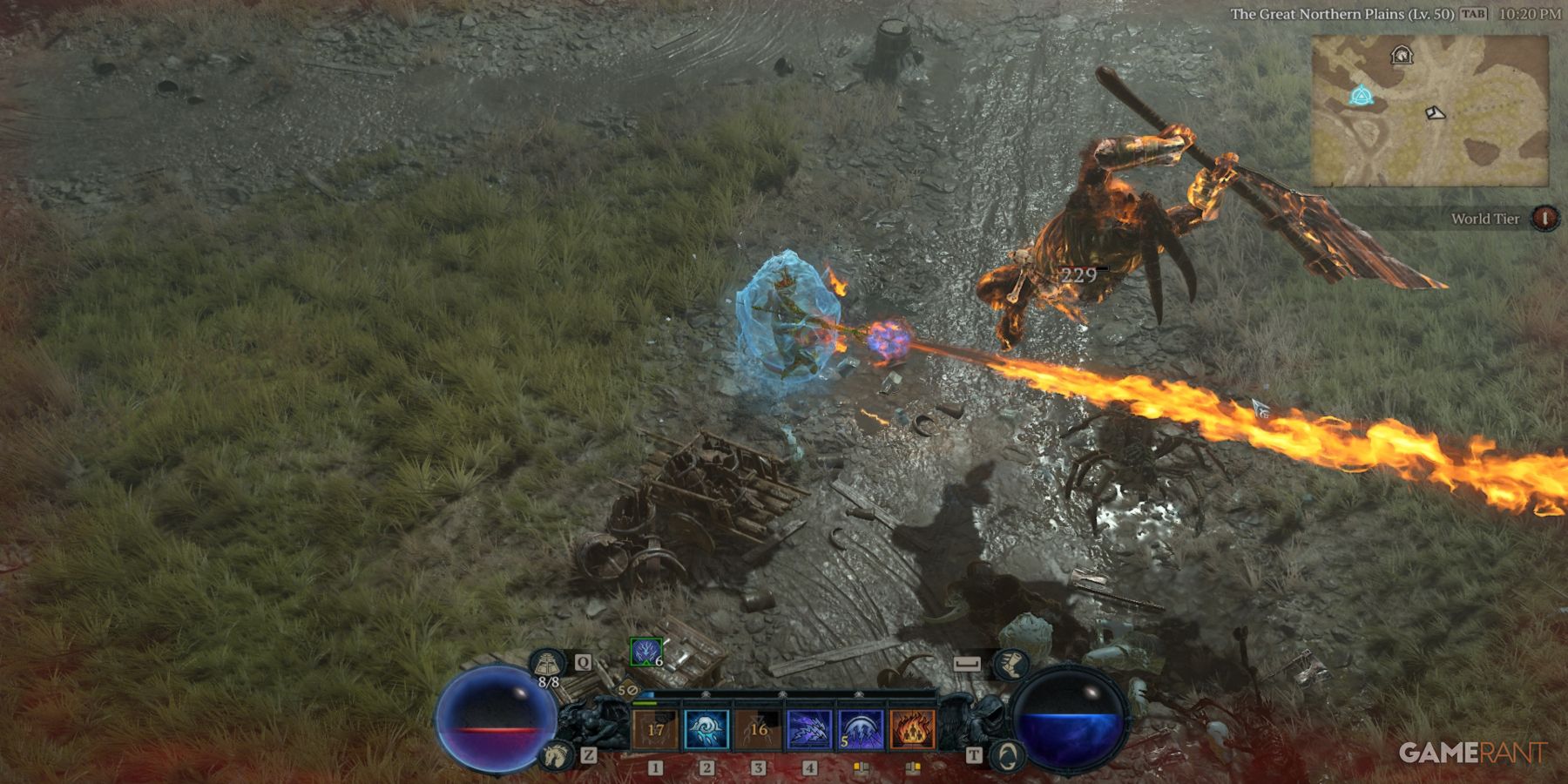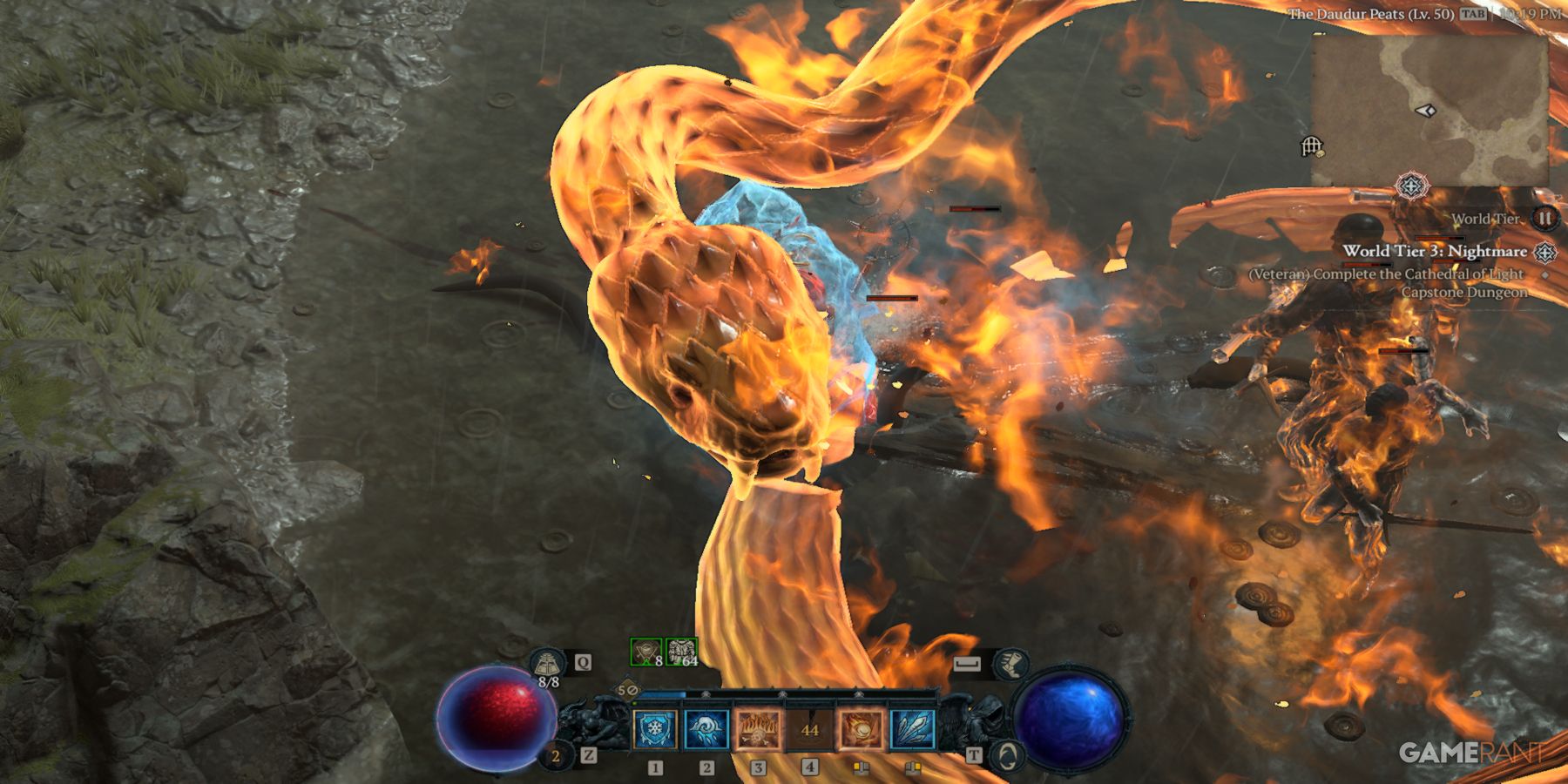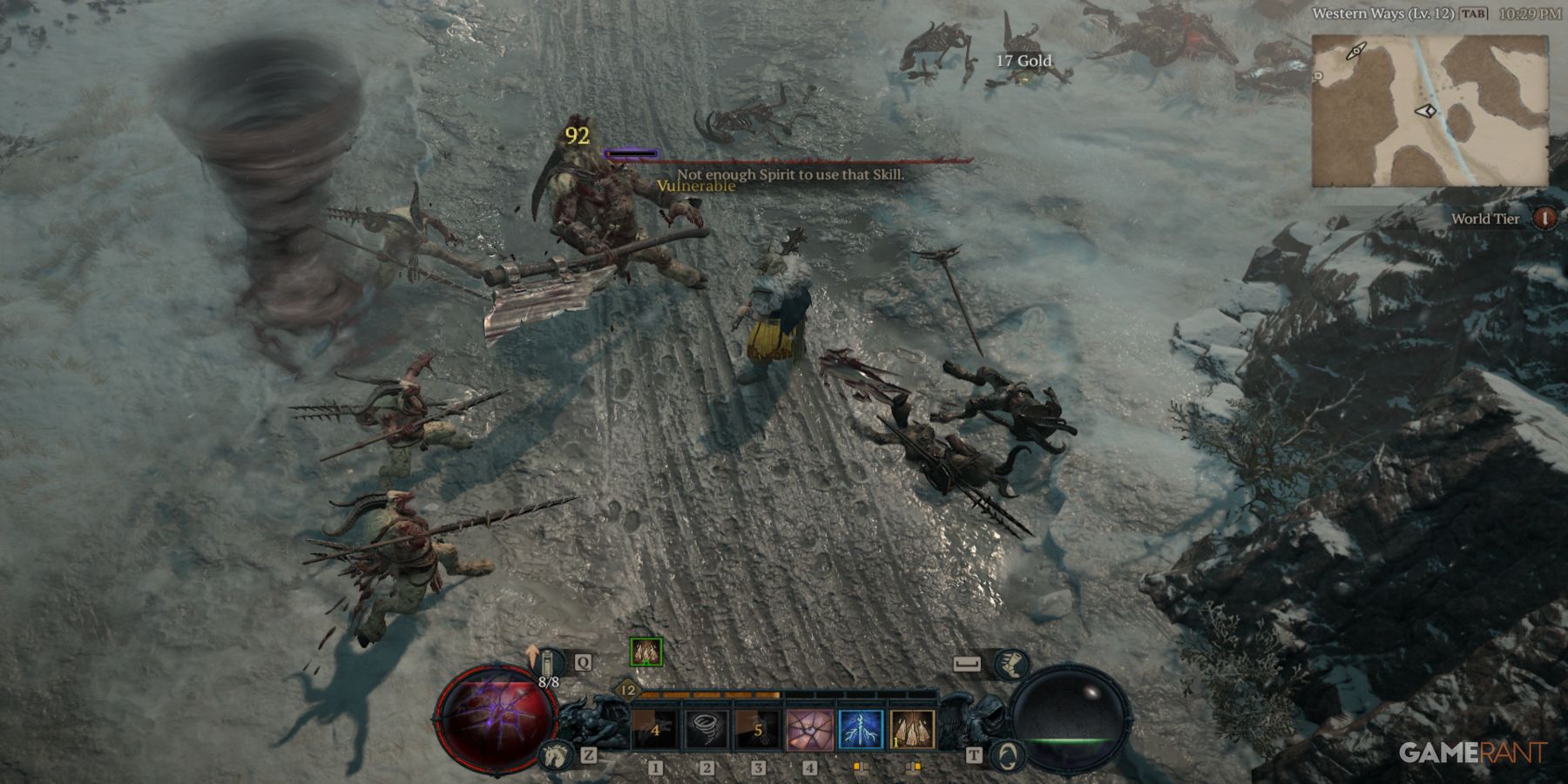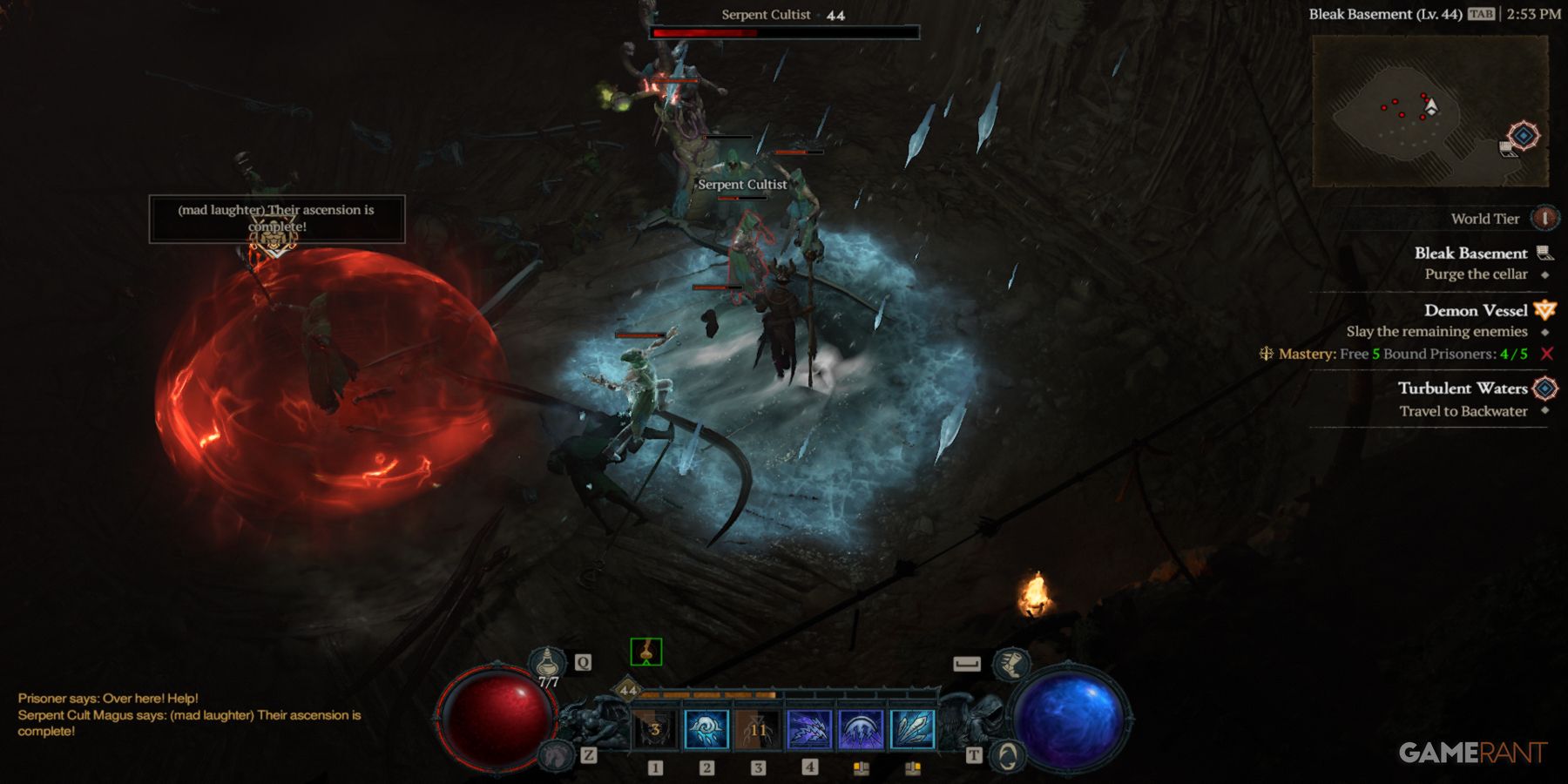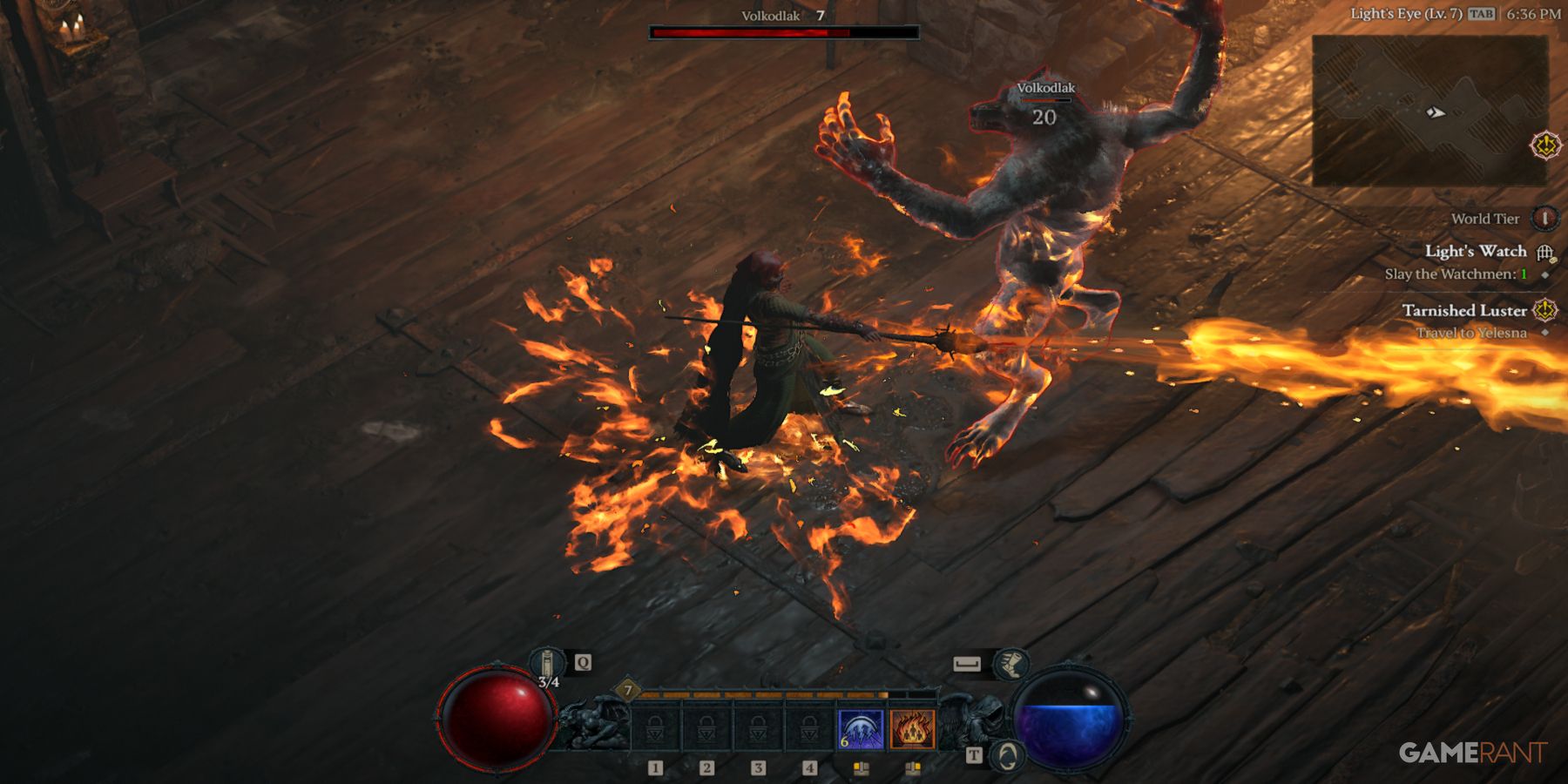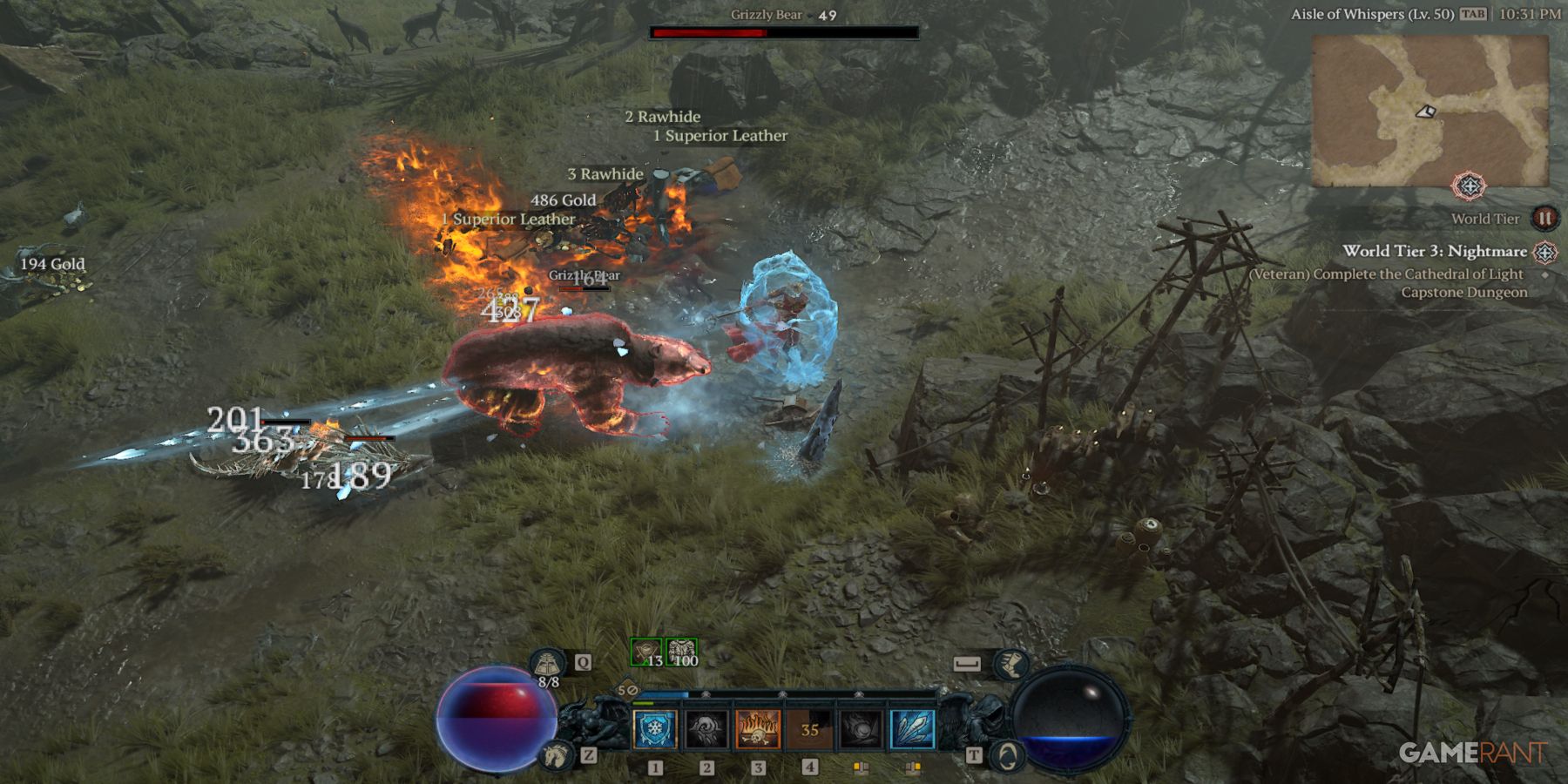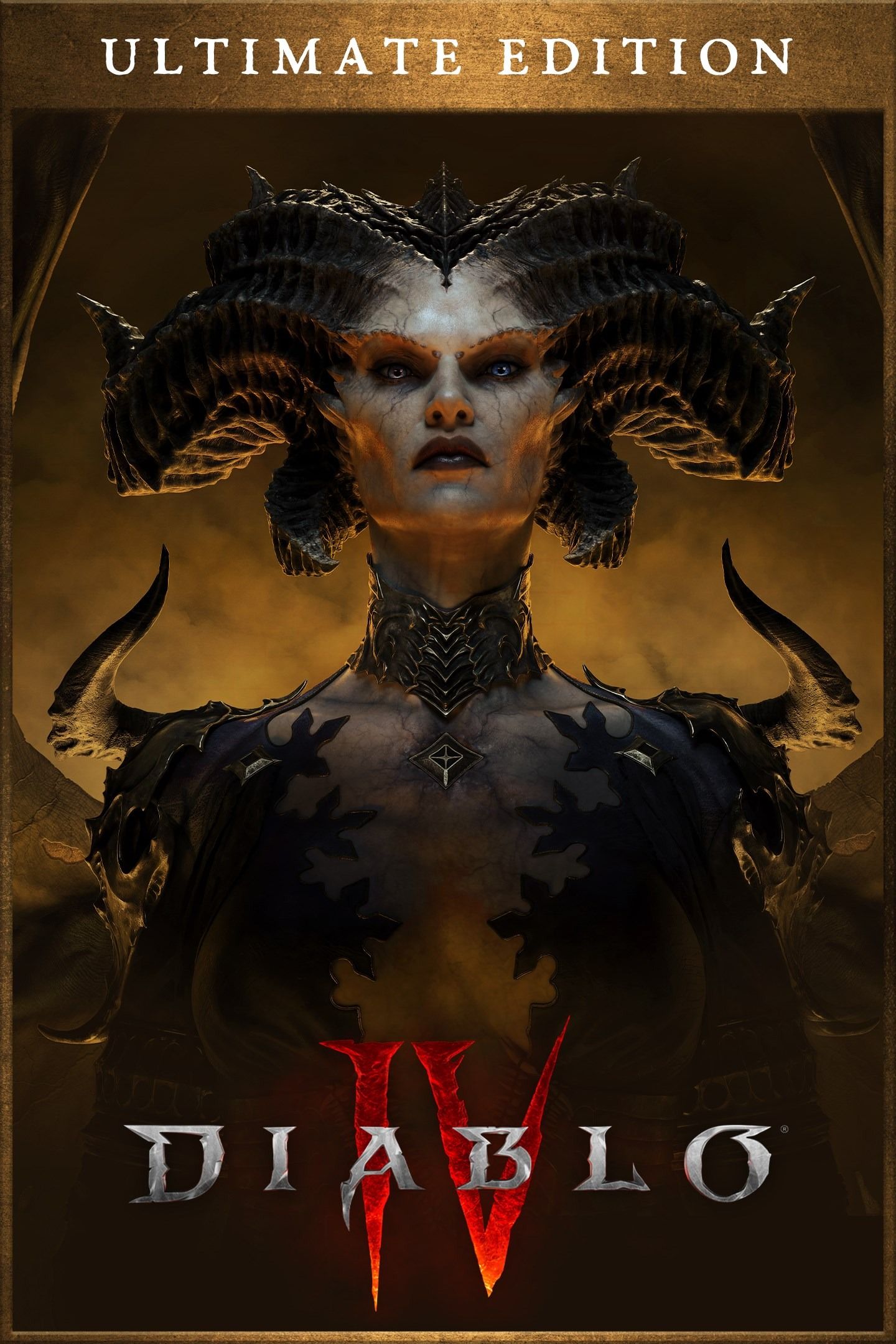
The player trudges through the relentless snowstorm as it whips around them, while towering wolves lurk just outside the reach of the lantern light ready to attack with fangs and claws. Seeking refuge from the storm, the player stumbles upon a small town only to uncover a dark and twisted secret that could bring about the end of the world. This is just the beginning of Diablo 4's bloody and dark-Gothic tale, crafted by Blizzard.
The isometric, top-down style of action roleplaying games has been effectively utilized in titles like Lost Ark, Planescape: Torment, Hades, Path of Exile, Titan Quest, and more. However, for many older gamers, the 2.5D style was first cemented as a favorite genre by games like Diablo and Diablo 2. The unique blend of RPG and action combat quickly gained notoriety among gamers, with macabre and apocalyptic tales that often hung the fate of the world known as Sanctuary in the balance. Users fought back hordes of demons and sometimes angels while uncovering the greater and lesser evils that constantly threatened the world. These fears hold true in Diablo 4 as well.
Blizzard's Diablo franchise has captivated fans since the release of the first game in 1997. Originally developed by Condor and later renamed Blizzard North, the PC game has always centered around the battle between Heaven and Hell, featuring dark and gruesome storytelling. Diablo 4 takes this to the next level with its seamless integration of story, graphics, and character design, perfectly immersing players in a world constantly under threat from the forces of light and dark.
In the game's opening cutscene, the player is shown riding their horse through a snowy terrain. An observant player will notice that their own custom character is featured in the scene, complete with unique scars and hairstyle. This is just the beginning of Blizzard's efforts to fully immerse players in the world of Sanctuary. While it's not uncommon for games to include player-created characters in cutscenes, Blizzard takes it to the next level with their exceptional attention to detail. Additionally, the voice acting for both main and side characters is of the highest quality, solidifying Blizzard's reputation for producing some of the best movie-quality cutscenes in the industry.
The storytelling in Diablo 4 is among the best that Blizzard has ever produced. The plot is so well-crafted that players are likely to become engrossed in it, and the game manages to gradually shift the focus to the player. Although there are violent scenes that may make some players uncomfortable, it is typical of the Diablo franchise to have such sequences. The story starts small but expands gradually, leading to a satisfying conclusion while paving the way for future tales. The campaign is one of the longest in the series, and players will encounter both main and side characters, who, albeit not directly involved in combat, have distinctive audio cues. The story is linear, so players won't be able to make choices that significantly alter its trajectory. However, this approach allows Blizzard to tell the story they want to tell and deliver a compelling narrative. While newcomers to the series may feel overwhelmed by the lore references, they can still appreciate the game's story without prior knowledge of the series.
Exploring the vast amount of side quests in Diablo 4 enhances the game's sense of immersion. These quests can be initiated by speaking with various NPCs located throughout the game's world or by discovering a dropped item after defeating enemies. Each quest offers a unique and captivating story that can range from small and focused to larger, multi-step missions that leave a lasting impact.
The visuals in Diablo 4 are stunning, with or without the high-resolution texture pack. However, if players meet the requirements for the pack, it takes the game to an even higher level of beauty, especially when zooming in. The dungeons are dimly lit with flickering torches, providing just enough light to reveal hidden corners. The trees are ominous, their branches looming in an almost sinister manner. Meanwhile, the ground textures of dirt, sand, and grass are expertly crafted, and the enemy designs are straight out of a nightmare. Even the well-lit mountain pathways and the serene beaches and tide pools are breathtaking to behold.
Lillith, the mother of Sanctuary and daughter of Mephisto, boasts a stunning and intimidating design in Diablo 4. The game's enemy designs, including bosses, are some of the best-looking in the series, making battles a joy even at the highest difficulty. Players will encounter a variety of enemies as they progress through the game's various areas, adding to the excitement of exploration. However, some may find the light source attached to the front of the player's character, casting a shadow from an invisible source, to be an annoyance. The game also features a day and night cycle that changes the appearance of the landscape, although it never gets dark enough to impact visibility.
One of Diablo 4's greatest strengths is its effective use of changes in elevation. Running across sand dunes, climbing cliffs, and surveying enemies from a hilltop are all made possible by the game's elevation changes, which are executed almost flawlessly. These changes also allow for quest steps to be broken up without disrupting the game's flow, although some missions can become tedious due to repeated travel up and down the same set of points. Nevertheless, these moments are infrequent, making the game's main campaign a pleasure to progress through.
Character spells and animations in the game have been meticulously crafted, showing the amount of work and love put into them. When a player or enemy gets frozen, for instance, the frozen entity is encased in icicles that point away from where the attack emanates, adding to the immersion and feeling of being a powerful entity traveling through the world. Similarly, physical attacks are also given attention, with enemies being neatly cut in two on some larger attacks and body parts flying through the air and splattering blood on landing. Furthermore, each skill in the skill tree has a specific use, making them all valuable in their own right.
Players may find a use for all the skills available, especially those that cause vulnerability, which can significantly increase damage to monsters. It's satisfying to see enemies get launched and land hard after an attack or spell, but some players may notice that the blood, gore, and bodies disappear quickly. While it's unclear why this happens, it's unlikely to be a dealbreaker for anyone despite its short duration.
Diablo 4's character designs are impressive, and choosing between Rogue, Necromancer, Barbarian, Druid, or Sorceress is a genuinely challenging decision. Although the basic skill trees are smaller than those of some other ARPGs, players still have plenty of choices. Pure casters, hybrid caster/melee, and strictly melee classes are all available. While some previous classes' unique spells are missing, each class has a unique aspect that makes it stand out. For example, Necromancers have the Book of the Dead, which allows them to choose abilities for their minions or buff themselves. Barbarians can equip four melee weapons simultaneously and have an expertise menu for individual skill customization. These small touches make each character distinct and add to the difficulty of choosing a class.
Veteran Diablo players will be thrilled to discover the abundance of activities available outside of the main story missions. They can conquer and defend strongholds scattered across Sanctuary, engage in epic world-boss battles, search for the Altars of Lillith, increase their regional reputation, complete dynamic and short-lived quests that pop up in different areas, and even participate in PVP battles. And these are just a few of the activities available before unlocking additional options that come with completing the story and reaching World Tier 3 and 4. With so much to explore, players will have plenty of content to keep them occupied for a long time. Even after finishing the story, there will still be vast uncharted territories left to explore. In a game with finite borders, the opportunity for exploration is a welcome addition.
Players may experience a sense of monotony in Diablo due to the repetitive nature of many quests and missions that involve mindlessly killing enemies. Whether it's gathering soul essence from specific monsters, charging crystals by killing enemies within a certain range, or obtaining items necessary for progressing through the game, the constant killing can lead to burnout. While it's true that Diablo is a brutal and deadly world, some players may find the repetition tedious and struggle to maintain their sense of immersion.
Players can now enjoy the fact that the world scales up to their level, enabling them to explore and grind for appropriate level items upon returning to a previously-visited area. Although some areas are much more dangerous until reaching the recommended minimum level, the larger lower level locations somewhat diminish the gatekeeping effect. However, if players choose to blitz through the story missions, they may need to complete side quests or grind in order to avoid immediate defeat in higher level areas. This is especially noticeable when taking advantage of the option to jump directly into the endgame after completing the main campaign story, allowing new or pre-existing characters to begin their endgame grind from level 1. Blizzard has made it a priority to provide players with as much choice as possible when it comes to playing the game, even before considering Diablo 4's crafting systems or the Paragon Board.
Crafting in Diablo 3 has undergone a significant transformation, allowing players to extract features from legendary items and store them for later use in new items. Moreover, by embedding them in rare items, players can upgrade them into legendary items, thereby providing a great deal of depth to build crafting. Additionally, legendary items contain a plethora of distinct abilities and skills. While the ability to enhance a rare item into a legendary one could reduce the need to sell or deconstruct items, players would still need to engage in both activities to gather materials and purchase armor. In the review build of the game, armor and weapon prices seemed exorbitantly high, and they also increase as players level up.
The Paragon Board is a dream system for build-crafters, offering a total of 220 points and a board full of interconnected tiles, separate from the skill tree. The beginner board contains nodes that provide boosts to skills, spells, or stats ranging from common to rare. Although it may seem overwhelming at first, Blizzard is confident that players will have a clear direction for their character by the time they reach the Paragon Boards. The game offers an impressive array of options, with each system smoothly integrating with the next. Despite the abundance of choices, the systems synergize effortlessly, making it hard not to be impressed. By the time players reach the second Paragon Board, Blizzard hopes they will have a clear direction for their character.
Diablo 4 is a testament to Blizzard's two decades of expertise in game design. The game boasts an impressive array of activities and an abundance of choices for character customization, a result of the company's extensive experience in game development. Every aspect of the game is infused with passion and attention to detail, evident in every system and corner of Sanctuary. With its first-ever simultaneous release on both PC and consoles, players can finally immerse themselves in the epic battle between Heaven and Hell, and with the game's depth and complexity, they will undoubtedly be playing for years to come.
Diablo 4, developed by Blizzard Entertainment, is an action-packed RPG that offers 5 playable classes for players to choose from. The game takes place in an open world Sanctuary where players must defeat Lilith, complete quests, level up, and obtain better loot. The highly anticipated game is set to release on June 6 for PC, PS4, PS5, Xbox One, and Xbox Series X/S. As part of this review, Game Rant was provided with a PC code to experience the game firsthand.
